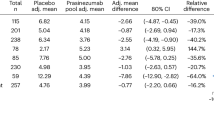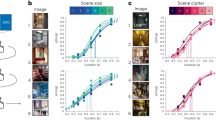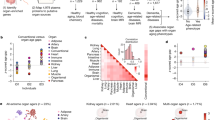Abstract
The neurotransmitter dopamine is crucial for decision-making under uncertainty, but its computational role is still a subject of intense debate. To test its potential roles, we invited patients with Parkinson’s disease (PD), who have less internally generated dopamine, to participate in a visual decision-making task in which uncertainty in both prior and current sensory information was varied. Behaviour during these tasks is often predicted by Bayesian statistics. We found that many aspects of uncertainty processing were conserved in PD patients: they could learn the prior uncertainty and utilize both prior and current sensory information. As predicted by prominent theories, we found that dopaminergic medication influenced the weight given to sensory information. However, as PD patients learned, this bias disappeared. In addition, throughout the experiment the patients exhibited lower sensitivity to current sensory uncertainty compared with age-matched controls. Our results provide empirical evidence for the idea that dopamine levels, which are affected by PD and the drugs used for its treatment, influence the reliance on new information.
This is a preview of subscription content, access via your institution
Access options
Access Nature and 54 other Nature Portfolio journals
Get Nature+, our best-value online-access subscription
$29.99 / 30 days
cancel any time
Subscribe to this journal
Receive 12 digital issues and online access to articles
$119.00 per year
only $9.92 per issue
Buy this article
- Purchase on Springer Link
- Instant access to full article PDF
Prices may be subject to local taxes which are calculated during checkout




Similar content being viewed by others
References
Vilares, I. & Kording, K. Bayesian models: the structure of the world, uncertainty, behavior, and the brain. Ann. NY Acad. Sci. 1224, 22–39 (2011).
Kording, K. P. & Wolpert, D. M. Bayesian integration in sensorimotor learning. Nature 427, 244–247 (2004).
Corlett, P. R., Frith, C. D. & Fletcher, P. C. From drugs to deprivation: a Bayesian framework for understanding models of psychosis. Psychopharmacology 206, 515–530 (2009).
Vilares, I., Howard, J. D., Fernandes, H. L., Gottfried, J. A. & Kording, K. P. Differential representations of prior and likelihood uncertainty in the human brain. Curr. Biol. 22, 1641–1648 (2012).
Hsu, M., Bhatt, M., Adolphs, R., Tranel, D. & Camerer, C. F. Neural systems responding to degrees of uncertainty in human decision-making. Science 310, 1680–1683 (2005).
Poldrack, R. A. et al. The neural correlates of motor skill automaticity. J. Neurosci. 25, 5356–5364 (2005).
Lehericy, S. et al. Distinct basal ganglia territories are engaged in early and advanced motor sequence learning. Proc. Natl Acad. Sci. USA 102, 12566–12571 (2005).
Kish, S. J., Shannak, K. & Hornykiewicz, O. Uneven pattern of dopamine loss in the striatum of patients with idiopathic Parkinson’s disease. N. Engl. J. Med. 318, 876–880 (1988).
Fiorillo, C. D., Tobler, P. N. & Schultz, W. Discrete coding of reward probability and uncertainty by dopamine neurons. Science 299, 1898–1902 (2003).
Friston, K. J. et al. Dopamine, affordance and active inference. PLoS Comp. Biol. 8, e1002327 (2012).
Friston, K. The free-energy principle: a rough guide to the brain? Trends Cogn. Sci. 13, 293–301 (2009).
Berridge, K. C. & Robinson, T. E. What is the role of dopamine in reward: hedonic impact, reward learning, or incentive salience? Brain Res. Rev. 28, 309–369 (1998).
Wise, R. A. Dopamine, learning and motivation. Nat. Rev. Neurosci. 5, 483–494 (2004).
Montague, P. R., Dayan, P. & Sejnowski, T. J. A framework for mesencephalic dopamine systems based on predictive Hebbian learning. J. Neurosci. 16, 1936–1947 (1996).
Schultz, W., Dayan, P. & Montague, P. R. A neural substrate of prediction and reward. Science 275, 1593–1599 (1997).
Kapur, S. Psychosis as a state of aberrant salience: a framework linking biology, phenomenology, and pharmacology in schizophrenia. Am. J. Psychiatry 160, 13–23 (2003).
McClure, S. M., Daw, N. D. & Montague, P. R. A computational substrate for incentive salience. Trends Neurosci. 26, 423–428 (2003).
Galea, J. M., Bestmann, S., Beigi, M., Jahanshahi, M. & Rothwell, J. C. Action reprogramming in Parkinson’s disease: response to prediction error is modulated by levels of dopamine. J. Neurosci. 32, 542–550 (2012).
Beeler, J. A., Daw, N., Frazier, C. R. M. & Zhuang, X. X. Tonic dopamine modulates exploitation of reward learning. Front Behav. Neurosci. 4, 170 (2010).
Dayan, P. & Balleine, B. W. Reward, motivation, and reinforcement learning. Neuron 36, 285–298 (2002).
Frank, M. J., Seeberger, L. C. & O’Reilly, R. C. By carrot or by stick: cognitive reinforcement learning in parkinsonism. Science 306, 1940–1943 (2004).
Cools, R., Barker, R. A., Sahakian, B. J. & Robbins, T. W. l-Dopa medication remediates cognitive inflexibility, but increases impulsivity in patients with Parkinson’s disease. Neuropsychologia 41, 1431–1441 (2003).
Brand, M. et al. Decision-making impairments in patients with Parkinson’s disease. Behav. Neurol. 15, 77–85 (2004).
Tassinari, H., Hudson, T. E. & Landy, M. S. Combining priors and noisy visual cues in a rapid pointing task. J. Neurosci. 26, 10154–10163 (2006).
Olanow, C. W., Obeso, J. A. & Stocchi, F. Continuous dopamine-receptor treatment of Parkinson’s disease: scientific rationale and clinical implications. Lancet Neurol. 5, 677–687 (2006).
Shiner, T. et al. Dopamine and performance in a reinforcement learning task: evidence from Parkinson’s disease. Brain 135, 1871–1883 (2012).
Frank, M. J. Dynamic dopamine modulation in the basal ganglia: a neurocomputational account of cognitive deficits in medicated and nonmedicated parkinsonism. J. Cogn. Neurosci. 17, 51–72 (2005).
Perugini, A., Ditterich, J. & Basso, M. A. Patients with Parkinson’s disease show impaired use of priors in conditions of sensory uncertainty. Curr. Biol. 26, 1902–1910 (2016).
Berniker, M., Voss, M. & Kording, K. Learning priors for Bayesian computations in the nervous system. PLoS ONE 5, e12686 (2010).
Fernandes, H. L., Stevenson, I. H., Vilares, I. & Kording, K. P. The generalization of prior uncertainty during reaching. J. Neurosci. 34, 11470–11484 (2014).
Kishida, K. T. et al. Sub-second dopamine detection in human striatum. PLoS ONE 6, e23291 (2011).
Ma, W. J., Beck, J. M., Latham, P. E. & Pouget, A. Bayesian inference with probabilistic population codes. Nat. Neurosci. 9, 1432–1438 (2006).
O'Reilly, J. X., Jbabdi, S., Rushworth, M. F. & Behrens, T. E. Brain systems for probabilistic and dynamic prediction: computational specificity and integration. PLoS Biol. 11, e1001662 (2013).
Acknowledgements
We thank D. Klein, L. Pickering, S. Toledo, C. López-Ortiz and especially T. Simuni for help in recruiting the PD patients. We also thank P. Dayan, H. Fernandes and M. Basso for useful comments on the manuscript. I.V. was supported by the Portuguese Science Foundation, the Gulbenkian Foundation and the Champalimaud Foundation (PhD fellowship SFRH/BD/33272/2007), and, more recently, by a Principal Research Fellowship from the Wellcome Trust to Professor Read Montague. This work was also supported by NIH grant 2R01NS063399 (to K.P.K.). The funders had no role in study design, data collection and analysis, decision to publish or preparation of the manuscript.
Author information
Authors and Affiliations
Contributions
Both authors designed the experiment. I.V. ran the experiments and analysed the data (with the supervision of K.P.K.). Both authors wrote the manuscript.
Corresponding author
Ethics declarations
Competing interests
The authors declare no competing interests.
Supplementary information
Supplementary Information
Supplementary Methods, Supplementary Table 1, Supplementary Figures 1–7, Supplementary Results, Supplementary References. (PDF 1348 kb)
Rights and permissions
About this article
Cite this article
Vilares, I., Kording, K. Dopaminergic medication increases reliance on current information in Parkinson’s disease. Nat Hum Behav 1, 0129 (2017). https://doi.org/10.1038/s41562-017-0129
Received:
Accepted:
Published:
DOI: https://doi.org/10.1038/s41562-017-0129
This article is cited by
-
Bayesian decision-making under stress-preserved weighting of prior and likelihood information
Scientific Reports (2020)
-
An integrative framework for perceptual disturbances in psychosis
Nature Reviews Neuroscience (2019)
-
Sensory attenuation in Parkinson’s disease is related to disease severity and dopamine dose
Scientific Reports (2018)
-
Neuroscience: Rationality, uncertainty, dopamine
Nature Human Behaviour (2017)



